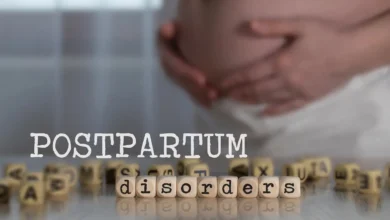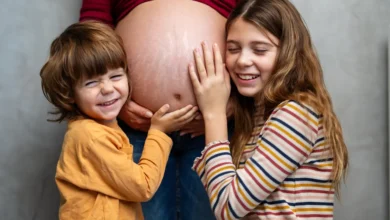You’ll need to prepare your child for potty training. You will teach your child about the basic concepts of toilets, passing urine and stools, and how to use them. Second, you’ll need to teach your child to use the potty. It will take a lot of practice. Be kind and encouraging with your child.
When Can You Start Toilet Training?
The first step in this process is identifying your child’s readiness signals. Potty training is a frustrating and difficult process if your child is not ready.
Experts say that children are usually ready to learn to use the potty between the ages of 18 months to 3 years. This is a huge range! When kids begin the process, they are usually around 27 months.
Potty Training Signs of Readiness Include:
- Can walk and sit on the toilet
- Can pull pants off and on again
- Can stay dry for a long time, such as 2 hours
- Can follow basic instructions
- Can tell you that he has to go potty or communicate in another way?
- It seems that the child is interested in wearing underwear or using the toilet.
This skill is usually developed by boys around 25 months. Girls can pull their underwear up and down by an average of 29.5 months. This skill is usually developed by boys around 33.5 months.
Potty Training Tips
Before you start potty training:
- Stock up on toilet seat rings, stepstools for the bathroom, and big child underwear.
- Before you start potty training, let your child get used to using the toilet or potty chair. They sit fully dressed on the chair or toilet, read books, or sing together.
- Be prepared before heading out with Post-its for automatic flush toilets and kid toilet seats. You might need it!
It’s important not to punish your child if your child displays signs of regression, such as refusing to go to the toilet or withholding stool.
Continue to encourage your child to use the bathroom and offer positive reinforcement when they make good choices. It’s okay to take a short break from potty training if frustration begins to build.
No matter which method of potty training you choose, keep in mind that your child may still need a diaper at night after he or she is potty-trained during the day. Around the age of 4 or 5, most children can stay dry all night.
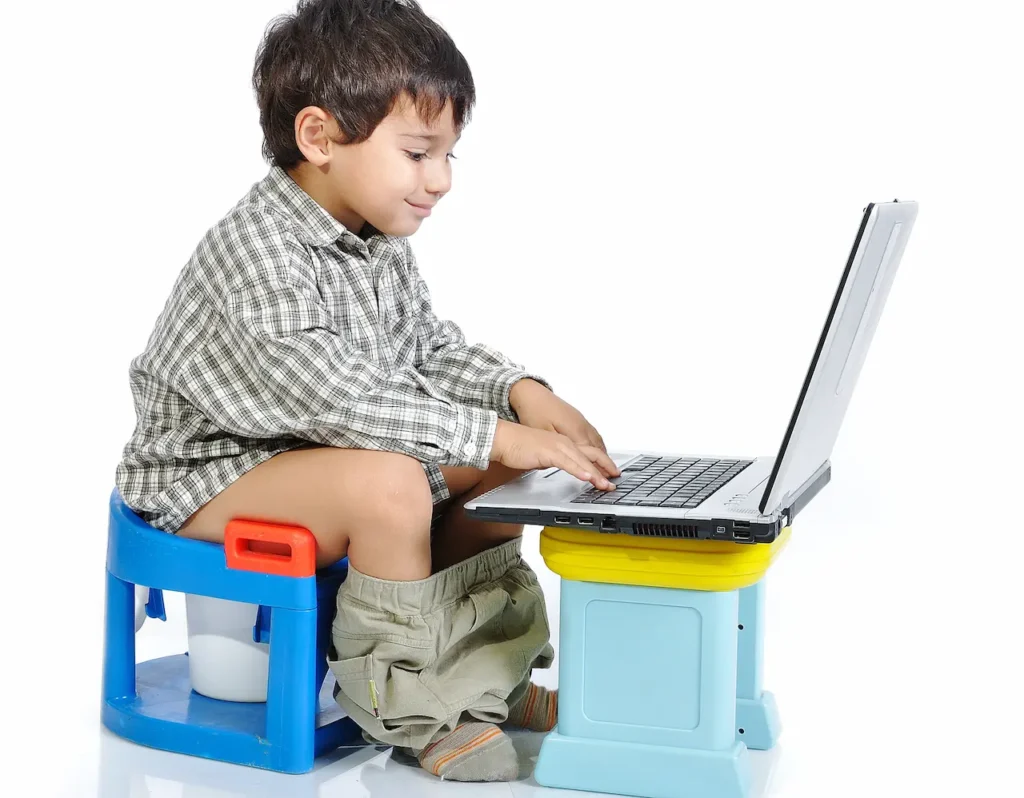
How to Prepare Your Child for Toilet Training?
It is possible to teach your child the basics of bathroom hygiene months before you begin potty training. These lessons will help your child prepare for potty training. The American Academy of Pediatrics has recommended the following steps.
Questions can start to stack up when it comes to toilet training your child. When should you start? Are they too young? You can’t leave it too late. Does toilet training differ for girls and boys?
Karen Willcocks comes from Karitane. She says that parents have many difficulties when it comes time to teach their children how to use the toilet. However, one of the most common questions she receives is regarding teaching boys.
Standing or Sitting?
She says that parents often wonder when they should make their boys stand up and pass urine.
Karen advises parents to wait until their sons are confidently seated and using the toilet before teaching them to stand up and wee.
It is easier to learn while sitting because both bowel movements as well as passing urine usually occur at the same moment. It is less distracting to not have to aim at the toilet bowl.
Karen says that you should teach your child to use the toilet and potty while they are sitting on them until they can stand.
There’s also the risk that they will develop a fear of the toilet if you take them straight to the adult toilet without a seat, no small steps, and no support.
Pull-ups and Potty Training Pants
Potty training pants, also known as pull-ups, can come in handy for potty training and give your child confidence when the time comes to switch from nappies to “grown-up pants”. These pants do not absorb wee like disposable nappies so it is easier for your child to know when they are dirty.
It is better to use training pants as a transition towards normal pants than to replace nappies. Encourage your child’s training pants to stay dry by encouraging them to use the potty.
You can place a folded piece of kitchen paper in the nappy if your child has trouble recognizing when they have poop. The paper will remain wet, and your child should learn that weeing is a wet feeling.
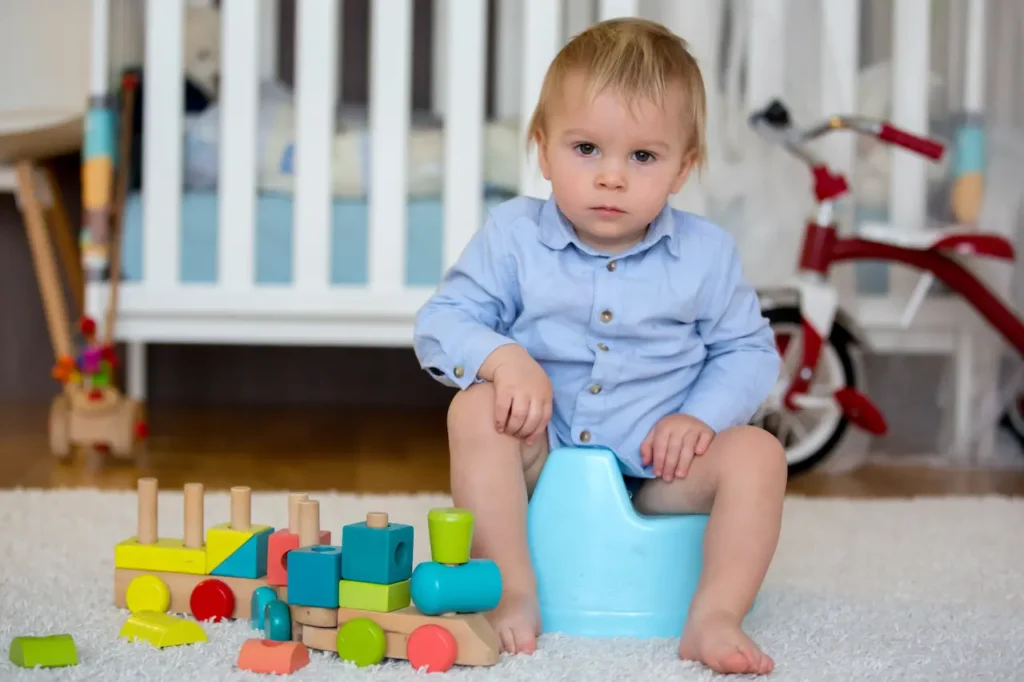
Potty Training at Night
Concentrate on potty training your child during the daytime before you begin to remove their nappies at night.
Your child may be ready to start nighttime potty training if their nappy has been dry for several mornings.
Ask your child to go potty before bedtime and keep it nearby so that they can use it in case they need to urinate during the night. A waterproof sheet for your child’s bed is a great idea.
It’s just as important to reward your child when they succeed. If you are having trouble, try using nappies for a little longer at night and then try again in a couple of weeks.
Use the Toilet Instead.
Some children begin using the toilet rather than the potty sooner than others.
Your child will feel more secure and confident using a child’s toilet trainer seat. Your child can rest their feet on a step to get them in the right position for a poo.
Encourage your boy to sit to poop. Sitting down can encourage them to poop if they need it.
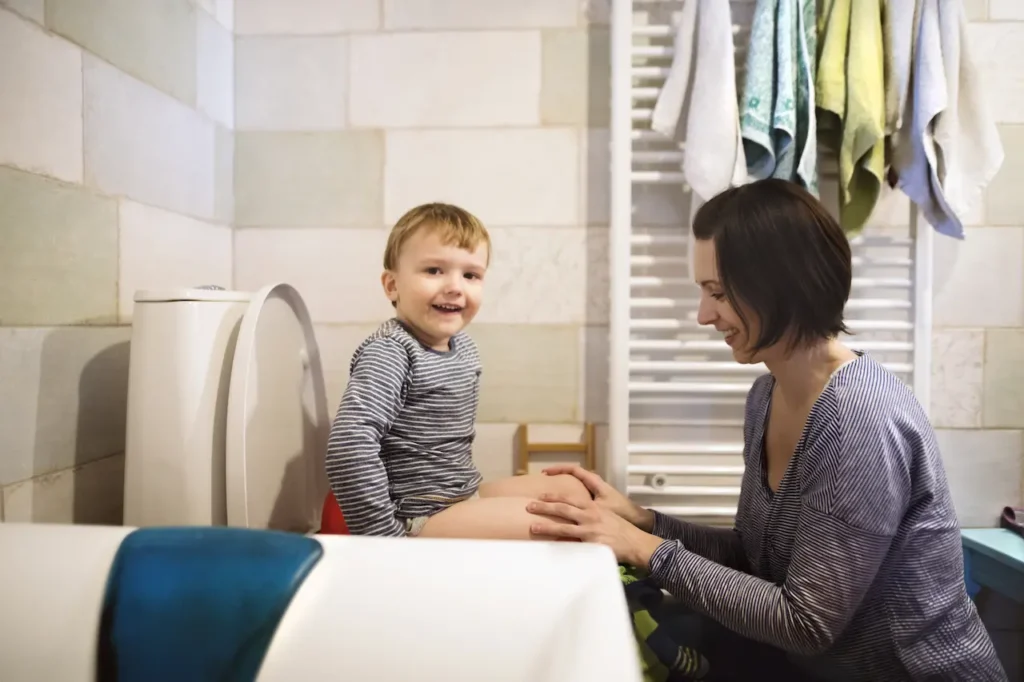
Learning is Often Based on Imitation.
Imitation is a key factor in the learning process when it comes to moving from sitting to standing. If you have a family with a bathroom closed-door policy, that’s about to change.
Karen explains that it is important to see Dad do things, such as washing his hands, and other similar actions.
Remember: If your child is resisting, do not force the issue.
When Will My Child be Toilet Trained?
Karen says toilet training can take a range of time. “Around 95 percent of children are toilet trained by the age of four,” she says, but there’s still a small number of children that may need up to six months to reach this milestone. If you visit your doctor or nurse for child health, they will ask: “What else is happening in your family?” There may be other factors at play. If your child is having difficulty using the toilet, it could be due to a variety of reasons. These include bullying, a change of school, a death in the family, or sensory issues.
Parents who started potty-training their child before the age of 24 months saw a 68 percent success rate by 36 months. Parents who started after the age of 24, however, saw a 54 percent success rate in 36 months. This is not a huge difference. Other research has shown that the sooner you start, the quicker you will be able to complete the training.
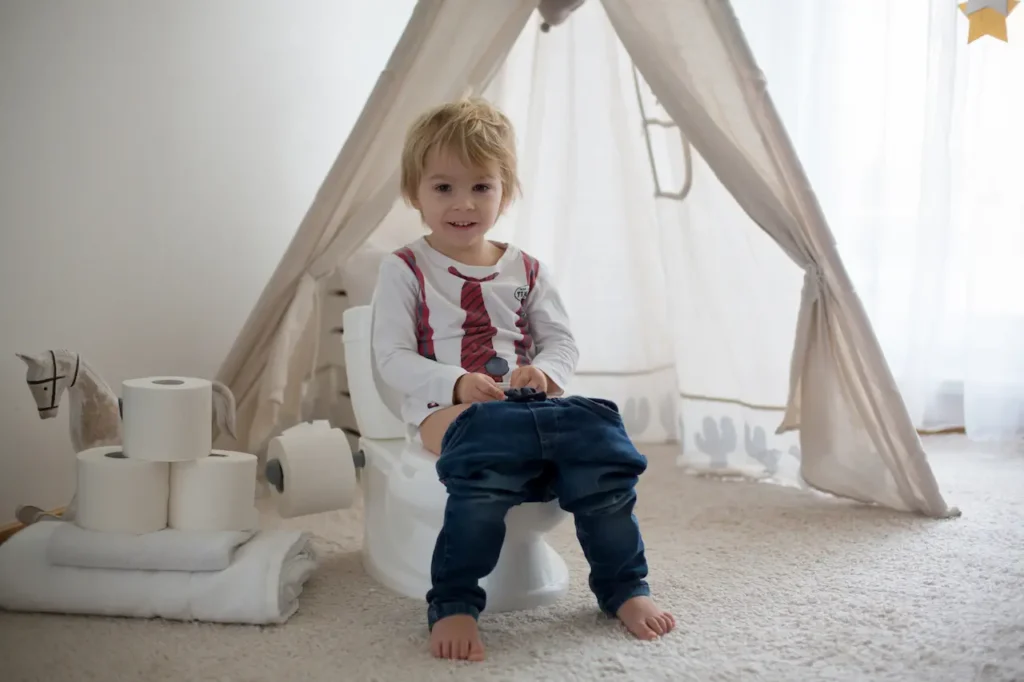
Conclusion
You will eventually see your little one potty-trained. He might take to it very quickly and impress you with his big-boy skills. He may need to be more patient.
Potty training is something that you will be able to check off your child’s development list by the time they are between the ages of three and four (if not earlier).
Do not hesitate to ask your pediatrician if you are having trouble achieving the goal.
